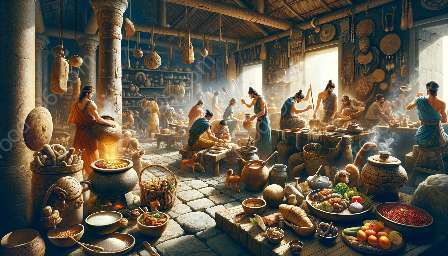Mesoamerican food culture is a rich and diverse tapestry that has left a lasting legacy on the culinary arts of ancient civilizations. From the traditional dishes to the unique cooking techniques, the food culture and history of the Mesoamerican region offer a fascinating glimpse into the culinary traditions of the past.
The History of Mesoamerican Cuisine
The history of Mesoamerican cuisine is deeply intertwined with the rise and fall of ancient civilizations such as the Maya, Aztec, and Olmec. These societies developed complex agricultural systems and cultivated a wide variety of crops, including maize, beans, squash, and chilies. The domestication of these crops laid the foundation for the development of Mesoamerican food culture, shaping the culinary traditions of the region for centuries to come.
Traditional Dishes and Ingredients
Central to Mesoamerican food culture are the traditional dishes and ingredients that have been passed down through generations. Corn, or maize, holds a special significance in Mesoamerican cuisine and is used in a wide array of dishes, such as tamales, tortillas, and pozole. Other staple ingredients include beans, squash, avocados, tomatoes, and a variety of chili peppers, which are used to add depth and flavor to Mesoamerican dishes.
Cooking Techniques
Mesoamerican cooking techniques are as diverse as the region’s culinary traditions. The use of the metate, a large stone slab used for grinding corn and other ingredients, is a key element of Mesoamerican food preparation. Additionally, the traditional method of nixtamalization, which involves soaking maize in an alkaline solution to create hominy, is a vital aspect of Mesoamerican cooking techniques.
Influence on Modern Cuisine
The influence of Mesoamerican food culture can be seen in modern cuisine, with traditional ingredients and cooking techniques making their way into contemporary dishes. From the widespread use of corn and chili peppers to the popularity of dishes such as guacamole and tacos, Mesoamerican cuisine continues to inspire and influence culinary traditions around the world.

